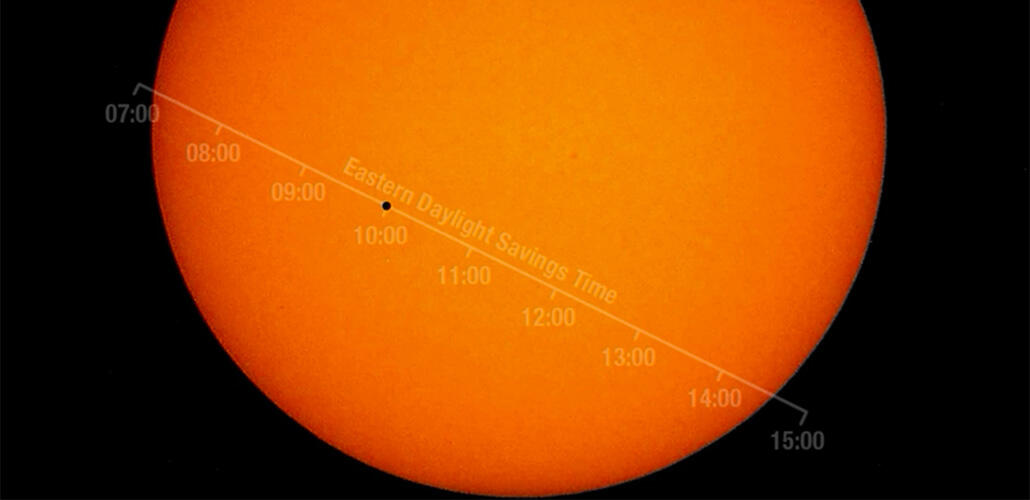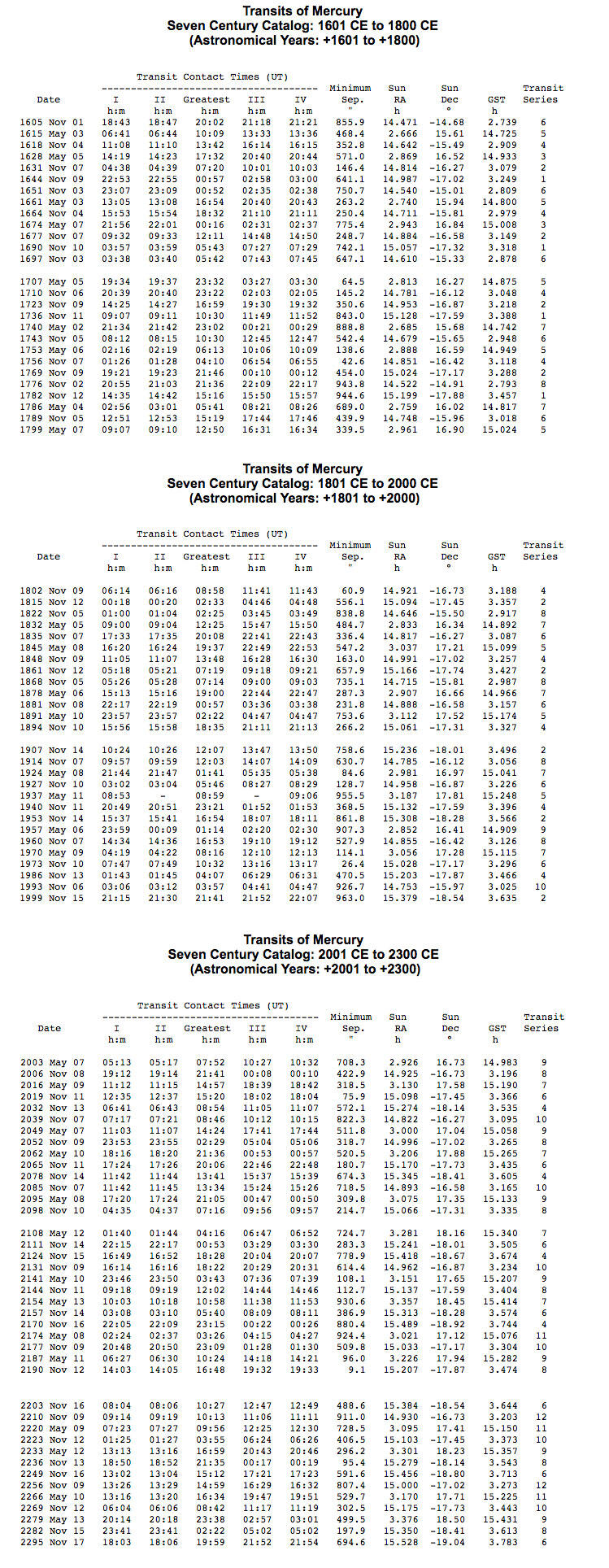Here are some facts about Mercury’s Transit:
A transit is the passage of a planet across the Sun’s bright disk and they are very rare astronomical events.During the transit, the planet can be seen as a small black disk slowly moving in front of the Sun.
The orbits of Mercury and Venus lie inside Earth’s orbit, so they are the only planets which can pass between Earth and Sun to produce a transit.
In the case of Mercury, there are on average thirteen transits each century. A transit of Mercury occurs only if the planet is in inferior conjunction with the Sun (between Earth and Sun) and is also crossing the through Earth’s orbital plane (the Ecliptic).
Consecutive transits of Mercury appear to be separated by either 3.5, 7, 9.5, 10 or 13 years.
The shorter periods are a consequence of several longer harmonics between the orbital periods of Mercury and Earth. The 13 year period is of particular note because it corresponds to nearly 54 orbits of Mercury around the Sun (it falls short of a perfect fit by just 2.01 days). A longer period of 33 years (10 + 10 + 13) produces an even better fit which corresponds to 137 orbits of Mercury minus 1.67 days. If one combines the 13 year and 33 year periods together, the 46 year total equals 191 orbits of Mercury plus only 0.34 days.
The image hereunder contains predictions for every transit of Mercury during the seven hundred year period 1601 CE through 2300.












